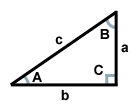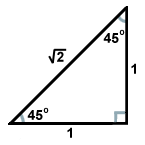Please wait while we process your payment
If you don't see it, please check your spam folder. Sometimes it can end up there.
If you don't see it, please check your spam folder. Sometimes it can end up there.
Please wait while we process your payment

By signing up you agree to our terms and privacy policy.
Don’t have an account? Subscribe now
Create Your Account
Sign up for your FREE 7-day trial
By signing up you agree to our terms and privacy policy.
Already have an account? Log in
Your Email
Choose Your Plan
Individual
Group Discount
Save over 50% with a SparkNotes PLUS Annual Plan!
 payment page
payment page
Purchasing SparkNotes PLUS for a group?
Get Annual Plans at a discount when you buy 2 or more!
Price
$24.99 $18.74 /subscription + tax
Subtotal $37.48 + tax
Save 25% on 2-49 accounts
Save 30% on 50-99 accounts
Want 100 or more? Contact us for a customized plan.
 payment page
payment page
Your Plan
Payment Details
Payment Summary
SparkNotes Plus
You'll be billed after your free trial ends.
7-Day Free Trial
Not Applicable
Renews July 25, 2025 July 18, 2025
Discounts (applied to next billing)
DUE NOW
US $0.00
SNPLUSROCKS20 | 20% Discount
This is not a valid promo code.
Discount Code (one code per order)
SparkNotes PLUS Annual Plan - Group Discount
Qty: 00
SparkNotes Plus subscription is $4.99/month or $24.99/year as selected above. The free trial period is the first 7 days of your subscription. TO CANCEL YOUR SUBSCRIPTION AND AVOID BEING CHARGED, YOU MUST CANCEL BEFORE THE END OF THE FREE TRIAL PERIOD. You may cancel your subscription on your Subscription and Billing page or contact Customer Support at custserv@bn.com. Your subscription will continue automatically once the free trial period is over. Free trial is available to new customers only.
Choose Your Plan
This site is protected by reCAPTCHA and the Google Privacy Policy and Terms of Service apply.
For the next 7 days, you'll have access to awesome PLUS stuff like AP English test prep, No Fear Shakespeare translations and audio, a note-taking tool, personalized dashboard, & much more!
You’ve successfully purchased a group discount. Your group members can use the joining link below to redeem their group membership. You'll also receive an email with the link.
Members will be prompted to log in or create an account to redeem their group membership.
Thanks for creating a SparkNotes account! Continue to start your free trial.
We're sorry, we could not create your account. SparkNotes PLUS is not available in your country. See what countries we’re in.
There was an error creating your account. Please check your payment details and try again.
Please wait while we process your payment

Your PLUS subscription has expired
Please wait while we process your payment
Please wait while we process your payment

Right Triangles
A triangle with one right angle is called a
right triangle. The side opposite the right angle is called the
hypotenuse of the triangle. The other two sides are called
legs. The
other two angles have no special name, but they are always
complementary. Do you see why?
The total angle sum of a triangle is 180 degrees, and the right angle is 90
degrees, so the other two must sum to 90 degrees.

There are two types of right triangles that every mathematician should know very
well. One is the right triangle formed when an
altitude is drawn from a vertex of an
equilateral triangle, forming two congruent right triangles. The angles of
the triangle will be 30, 60, and 90 degrees, giving the triangle its name: 30-60-90
triangle. The ratio of side lengths in such triangles is always the
same: if the leg opposite the 30 degree angle is of length x, the leg opposite
the 60 degree angle will be of x , and the hypotenuse across from the
right angle will be 2x. Here is a 30-60-90 triangle pictured below.
, and the hypotenuse across from the
right angle will be 2x. Here is a 30-60-90 triangle pictured below.

The other common right triangle results from the pair of triangles created when
a diagonal divides a square into two triangles.
Each of these triangles is congruent, and has angles of measures 45, 45, and 90
degrees. If the legs opposite the 45 degree angles are of length x, the
hypotenuse has a length of x . This ratio holds true for all
45-45-90 triangles. 45-45-90 triangles are also often called isosceles right
triangles.
. This ratio holds true for all
45-45-90 triangles. 45-45-90 triangles are also often called isosceles right
triangles.

One last characteristic to note is that the legs of a right triangle are also altitudes of the triangle. Therefore, the area of a right triangle is one-half the product of the lengths of its legs.
Please wait while we process your payment

